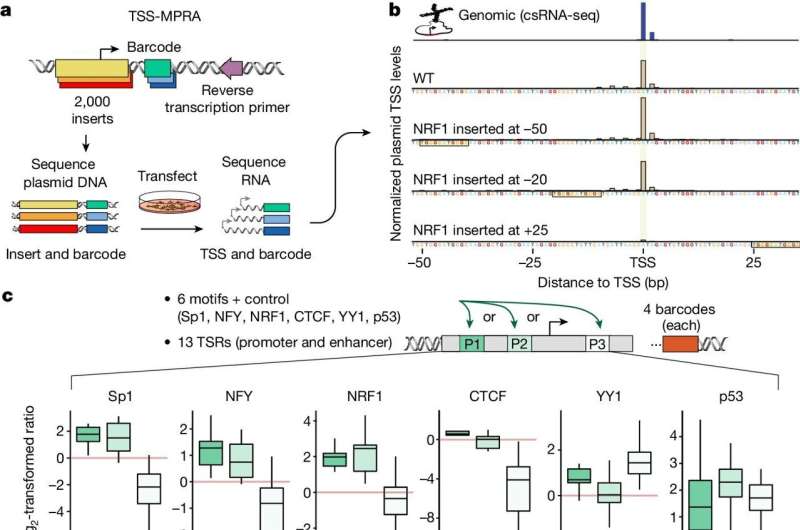This article has been reviewed according to Science X's editorial process and policies. Editors have highlighted the following attributes while ensuring the content's credibility:
fact-checked
peer-reviewed publication
trusted source
proofread
Scientists discover new code governing gene activity

A newly discovered code within DNA—coined "spatial grammar"—holds a key to understanding how gene activity is encoded in the human genome.
This breakthrough finding, identified by researchers at Washington State University and the University of California, San Diego and published in Nature, revealed a long-postulated hidden spatial grammar embedded in DNA. The research could reshape scientists' understanding of gene regulation and how genetic variations may influence gene expression in development or disease.
Transcription factors, the proteins that control which genes in one's genome are turned on or off, play a crucial role in this code. Long thought of as either activators or repressors of gene activity, this research shows the function of transcription factors is far more complex.
"Contrary to what you will find in textbooks, transcription factors that act as true activators or repressors are surprisingly rare," said WSU assistant professor Sascha Duttke, who led much of the research at WSU's School of Molecular Biosciences in the College of Veterinary Medicine.
Rather, the scientists found that most activators can also function as repressors.
"If you remove an activator, your hypothesis is you lose activation," said Bayley McDonald, a WSU graduate student who was part of the research team. "But that was true in only 50% to 60% of the cases, so we knew something was off."
Looking closer, researchers found the function of many transcription factors was highly position dependent.
They discovered that the spacing between transcription factors and their position relative to where a gene's transcription began determined the level of gene activity. For example, transcription factors might activate gene expression when positioned upstream or ahead of where a gene's transcription begins but inhibit its activity when located downstream, or after a gene's transcription start site.
"It is the spacing, or 'ambience,' that determines if a given transcription factor acts as an activator or repressor," Duttke said. "It just goes to show that similar to learning a new language, to learn how gene expression patterns are encoded in our genome, we need to understand both its words and the grammar."
"By integrating this newly discovered 'spatial grammar,'" Christopher Benner, associate professor at UC San Diego, anticipates scientists can gain a deeper understanding of how mutations or genetic variations can affect gene expression and contribute to disease.
"The potential applications are vast," Benner said. "At the very least, it will change the way scientists study gene expression."
More information: Sascha H. Duttke et al, Position-dependent function of human sequence-specific transcription factors, Nature (2024). DOI: 10.1038/s41586-024-07662-z




















